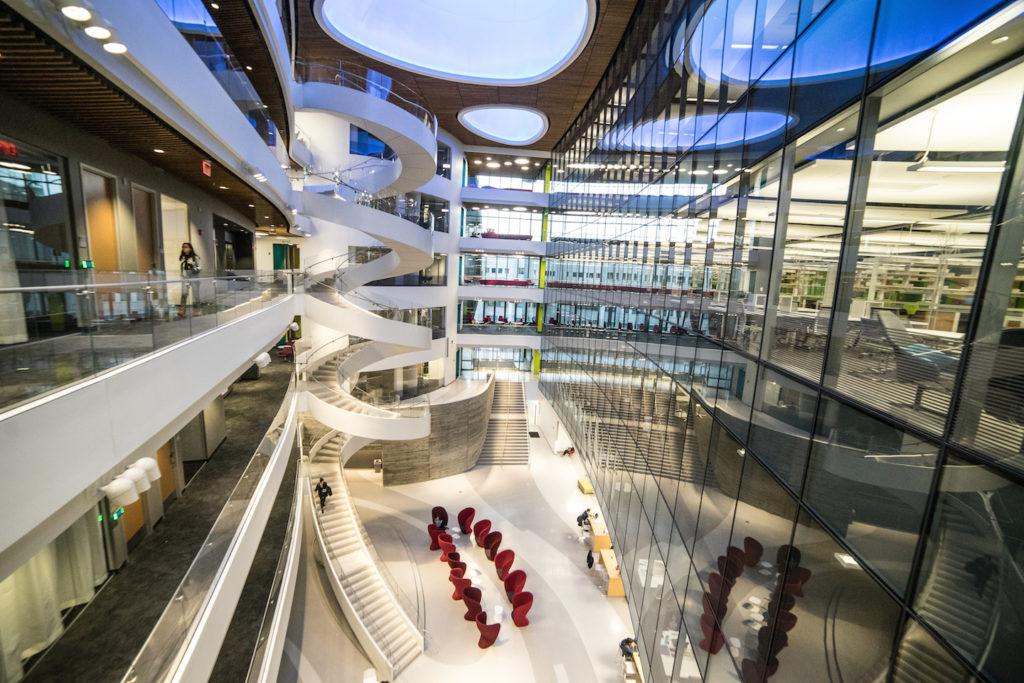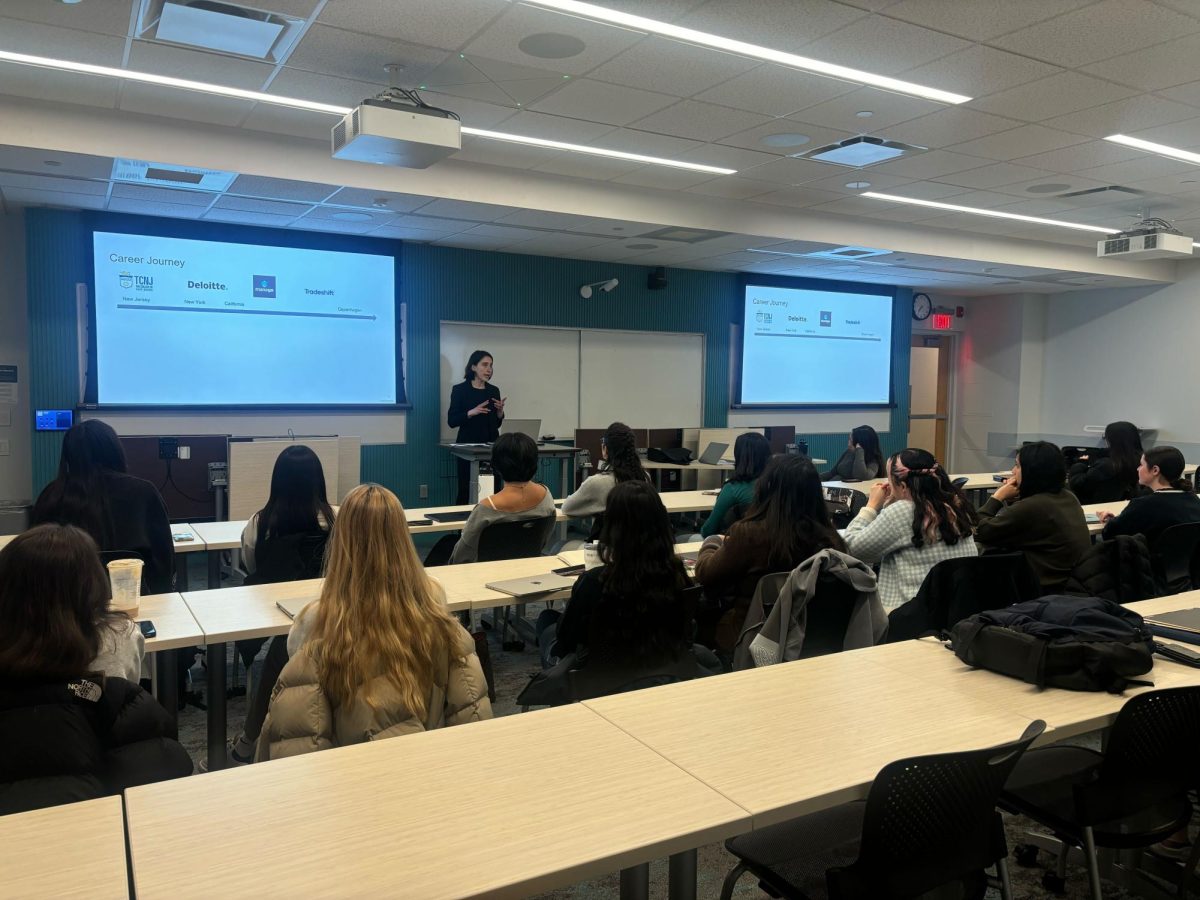By Hugh Shirley, news correspondent
Northeastern opened a new seven-story open-air science and research building Jan. 9 as part of the school’s plan to expand its research capabilities. The project cost an estimated $225 million.
The new building, called the Interdisciplinary Science and Engineering Center (ISEC), is located on Columbus Avenue across the street from the Northeastern University Police Department. It features seven floors of labs, four classrooms, an auditorium and offices to accommodate the 700 faculty members and graduate students who will soon fill the building.
“One of the things this building will do is provide opportunities, space, for [undergraduates] to do research,” said Olin Shivers, a Northeastern professor of computer science who was part of the team that collaborated with architects to design some of ISEC’s key features, such as the cafe and atrium.
Researchers will ideally represent many scientific subjects in collaborative groups called clusters. Some of the new clusters at ISEC include Human-Centered Robotics and Cybersecurity.
The project was a collaboration between Payette, the Boston-based architecture firm that designed the center; Hill International, the national construction consulting company that provided project managers; Suffolk Construction and Northeastern.
“It’s really been a cooperative construction project,” said Peter Martini, a program manager for Hill International. “A lot of us learned from this.”
The building is open, but construction isn’t over. The first floor cafe is still incomplete, work on the pedestrian crossing bridge – formerly called the Arc – hasn’t begun and many small projects within the center are still in the works, Martini said. Only the first floor classrooms and a handful of offices are in use.
The presence of ongoing construction hasn’t stopped students from utilizing the new space. There are several science classes and labs taking place in the first floor classrooms this semester.
“I think it adds a lot to this side of campus,” said Kayla Anderson, a sophomore physical therapy major. “I like how modern it is.”
Martini said the atrium’s first floor cafe is planned to open this spring, giving students access to the new Caffè Strega. Northeastern professors requested that ISEC’s architects put in a coffee shop because they often foster discussion.
“That’s a little social ritual that gets people interacting,” Shivers said. “Interacting is what you want people to do in that building”
The open-air atrium was another feature that Northeastern professors requested to draw researchers toward common areas and inspire collaboration. The atrium lends a striking look to the building’s interior, but it does take up a lot of usable space, said Ian Parks, a project manager from Hill International.
“It was a sacrifice too, if you think about the end user,” Parks said. “But it makes the experience better.”
A large, spiraling staircase provides access to every floor of the building and creates a visual centerpiece for the open air atrium.
“The whole building looks so nice. I love the staircase, it’s absolutely beautiful,” said Gwen Pasch, a freshman computer engineering major. “I wish I had more classes in this building.”
Each floor after the first is equipped with offices, a kitchenette, lab spaces, sitting areas and meeting rooms. Beginning in February, a space reservation system will allow users to claim those meeting rooms. It’s still unclear who will have access to the meeting rooms, and Martini said students might not be free to use all the space in ISEC in the future.
The four ISEC classrooms have wireless screen sharing, full whiteboard walls, outlets at each table and retractable walls which allow them to become two larger rooms.
Some students are not satisfied by the small number of undergraduate classrooms in the building.
“With all of the money the school has put into it, there should be more classrooms,” said Matt Wright, a freshman biology major.
One significant change to the original plan is the downsizing of the Arc, which was supposed to connect ISEC to the Curry Student Center and Snell Library. Martini said the Arc will extend from the second floor of ISEC to the space between Snell Library and the Egan Research Center. Construction won’t begin until 2018.
ISEC is on track to obtain gold certification for Leadership in Energy and Environmental Design (LEED), said Payette senior associate Wes Schwartz. LEED is a program by the U.S. Green Building Council that recognizes construction projects with low environmental impacts and high usage of sustainable resources. Gold is the second-best ranking.
Schwartz said in an e-mail to The News that the project used design strategies which led to a 70 percent energy reduction compared to a typical lab building.
Martini said the fenced-off parking lot next to ISEC will be left as a staging area for future construction projects, such as upcoming work on Ruggles and the Arc.
Photo by Lauren Scornavacca









